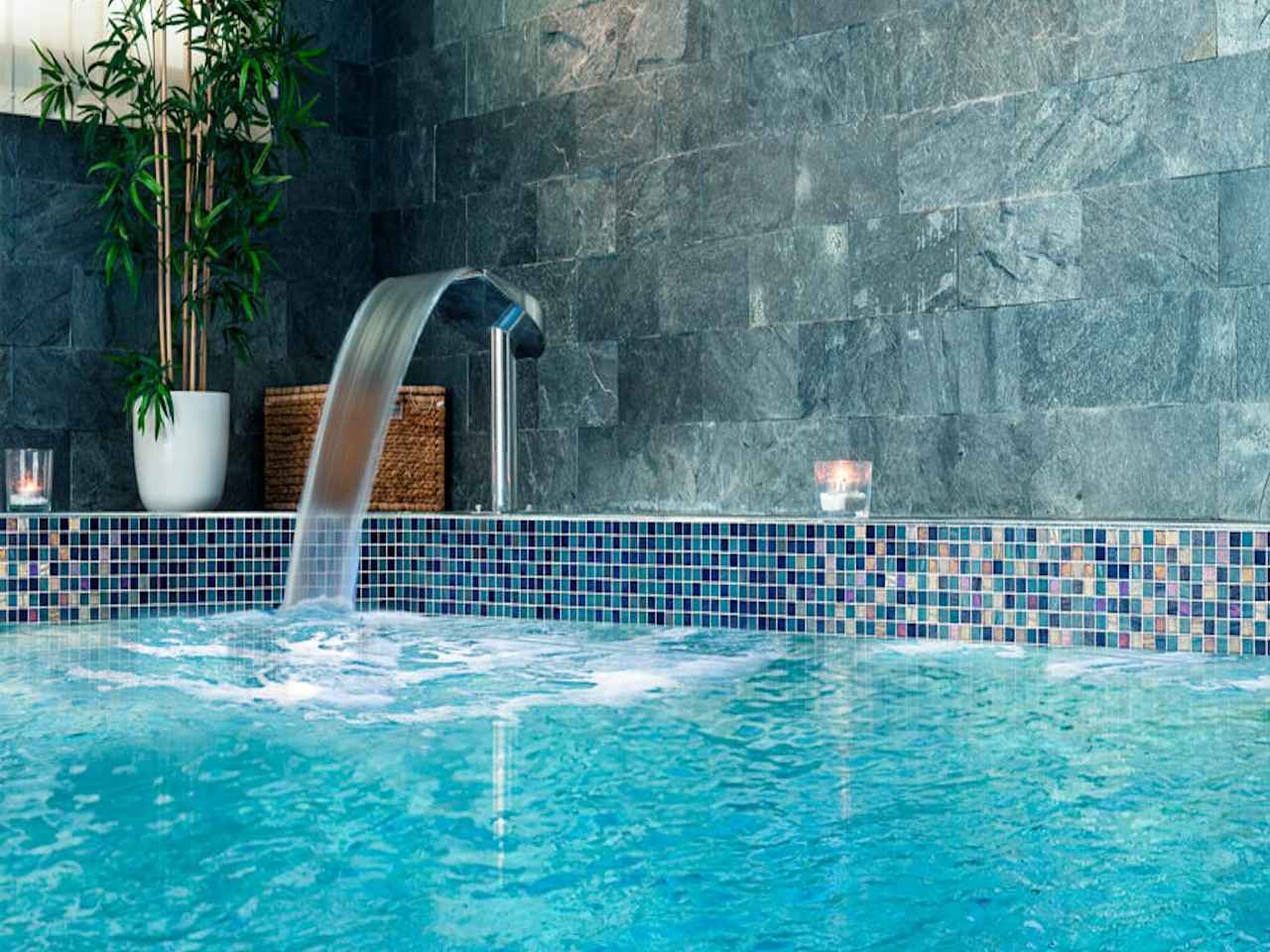Porcelain tiles are made of a combination of natural materials such as clay and ground sand. After being mixed, these components are then pressed and heated at extremely high temperatures to shape the tiles that are then used in construction and design.
Through the process of making the porcelain tiles, they can be optimized and modified given enhanced aesthetic features in order to serve versatile purposes and boost the design aspect wherever they are to be used.
Porcelain tiles, with their natural appearance and diverse designs, have become one of the most popular choices for swimming pool linings and their surroundings.
Different specifications of porcelain tiles
Porcelain is also well known for its physical and technical traits, such as its resistance to wear and loads thanks to its high durability, and it is not affected by temperature changes, so no shrinkage or expansions are to be feared with regard to chemical and atmospheric factors Porcelain is considered top-notch as it has a minimal effect on it. Furthermore, it has an anti-slippery trait, making it completely safe for adults and children to walk over it without fear of falling, not to mention that it is water-proof. All of these traits make porcelain the perfect fit for areas in constant contact with water, such as swimming pool linings and surroundings, laundry rooms and kitchens and so on.
Being hygienic is one of porcelain tiles' many remarkable features, as its water resistance makes it impermeable to water and thus prevents the growth of germs, fungi, and molds over it. Moreover, these tiles are easy to clean and can withstand any chemical with rarely any staining or damage affecting it, no matter how strong or concentrated the chemical is. Nonetheless, it is not only chemically stable but also extremely durable; when these two characteristics are combined, it is clear that porcelain tiles are a low-maintenance item with a very long half-life that requires minimal costs and effort to maintain.
How to Design Your Pool
Whether you are designing a new pool or renovating an old one, choosing the right tiles can be challenging. As you must consider the tiles for both the pool’s inside and outside.
Of course, the selection process will be influenced by your budget and requirements, such as durable, easy to clean and conserve, and visually appealing building materials!
Tile materials are the earliest decision to be made, and options include ceramic and porcelain tiles, natural stone, and glass stone.
Porcelain and ceramic tiles are the most cost-effective option for customers on a budget. A mosaic pattern can be designed from hand-painted tiles with marvelously astonishing designs.
Glass tiles are more expensive than the other tiles, but their optical feature of light reflection and refraction, or when water flows over their surface, creates a tremendously captivating scene.
Stone tiles are a beautiful choice for those wanting a natural or oceanic spectacle.
Having determined the type of tile you will use; the next step is to pick the colors. The most commonly used colors are blue, white, and green because they reflect light and water efficiently, which makes the pools look brighter and more welcoming.
Choosing a darker color or a combination of colors adds depth to your pool. So, you can use as well an accent color in case you wanted create an eye-catching design.
When choosing tiles' colors, keep in mind that their color may change when put under different lighting and according to the brightness of the sunlight, as well it might vary with the reflections and shadows of the trees and the surrounding structures, and when put under pools' water also.
When picking tiles for a swimming pool, ensure that they suit the surrounding area to the pool.
Tiles or mosaic borders can be placed around the circumference of the pool at the level of water filling to show the water level. And the floor of the pool can have lines of differently colored tiles in case you are building a pool for teaching and sport purposes, so it can be divided into columns and swimmers can be guided underwater to stick to the line beneath them. While the use of painted tiles or painted mosaics is appealing for luxurious and scenic appearances, considering the additional costs
As for the ladder or steps, you can use metallic painted ladder in case space is of importance while steps made out of tiles can be used as an aesthetic feature.
What difference can porcelain make
Porcelain is made out of natural abundantly present materials, which make it very reasonably priced, and thanks to its long half-life, it is considered a highly cost-effective eco-friendly material that can save you the high costs of maintenance and repeated renovations.
Porcelain can be made into long tiles that are named Olympic series tiles that can cover large areas with the usage of a moderate count of tiles in order to cut down the costs to an average, and these tiles can also be painted in case the customer needs a specific scenery in his pool. Porcelain can also be made into mosaics, either painted or unpainted, and used for a variety of purposes.
Porcelain tiles are an excellent choice for swimming pools' interiors and exterior surroundings because they are non-slippery and waterproof, and they have exquisite specifications in different aspects such as appearance and aesthetics, construction and design, maintenance and preservation so it is a suitable choice for watery grounds and areas.

